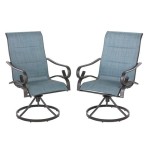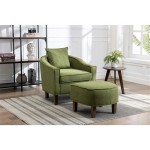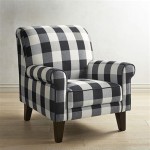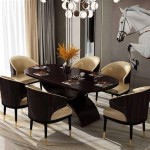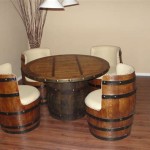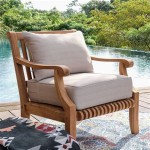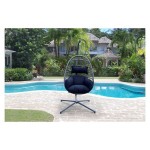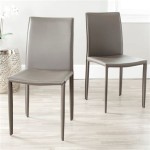Replacement Dining Chair Seat Pads: Enhancing Comfort and Aesthetics
Dining chair seat pads are integral to the comfort and aesthetic appeal of dining furniture. Over time, these pads can become worn, stained, or lose their cushioning, impacting the overall dining experience. Replacing these seat pads offers a cost-effective solution for restoring comfort and refreshing the look of dining chairs without the expense of purchasing entirely new furniture. This article explores the various aspects of replacement dining chair seat pads, including material options, installation techniques, and maintenance strategies.
Understanding the Need for Replacement
The impetus for replacing dining chair seat pads often stems from several key factors: wear and tear, aesthetic updates, and ergonomic considerations. Regular use inevitably leads to the degradation of seat pads. Fabric can become frayed or torn, cushioning can compress and lose its supportive qualities, and stains from spills can prove difficult to remove permanently. This not only detracts from the visual appeal of the chairs but also diminishes the comfort they provide.
Aesthetic preferences evolve, and the original seat pads might no longer align with the current decor of the dining area. Replacing the pads allows for a simple yet impactful update, enabling the incorporation of new colors, patterns, or textures to revitalize the space. This is particularly useful when undertaking a broader redesign of the dining room or when aiming to introduce a specific style or theme.
Ergonomics also play a crucial role. Substandard or worn-out seat pads can contribute to discomfort during prolonged sitting. Replacing them with pads that offer better support and cushioning can significantly improve the dining experience, especially for individuals who spend extended periods at the table. The selection of appropriate padding materials and thickness is essential in optimizing comfort and minimizing strain.
Material Selection for Replacement Seat Pads
The choice of materials for replacement dining chair seat pads is a critical decision that influences both the aesthetic and functional qualities of the finished product. Factors to consider include durability, comfort, ease of maintenance, and the overall style desired. A wide range of materials is available, each with its own set of advantages and disadvantages.
Fabric is a primary consideration. Cotton is a common and relatively inexpensive option, valued for its breathability and availability in a variety of colors and patterns. However, cotton is prone to staining and may not be the most durable choice for high-traffic areas. Linen offers a more sophisticated look and is known for its strength, but it can wrinkle easily. Synthetic fabrics, such as polyester and acrylic, are more resistant to stains and fading, making them suitable for households with children or pets. Performance fabrics, specifically designed for upholstery, provide enhanced durability and stain resistance, making them an excellent long-term investment.
Leather and faux leather (vinyl) are other popular choices. Leather offers a luxurious appearance and develops a unique patina over time. It is durable and relatively easy to clean, but it can be more expensive than fabric options. Faux leather provides a similar aesthetic at a lower cost and is often easier to maintain. However, it may not be as breathable as genuine leather and can crack or peel over time.
The cushioning material is just as important as the fabric. Foam is a common choice, available in varying densities to provide different levels of support. High-density foam offers greater durability and support, while lower-density foam is softer but may compress more quickly. Memory foam conforms to the shape of the body, providing customized comfort. Fiberfill is a less expensive option, but it tends to flatten over time and offers less support than foam. Dacron batting is often used in conjunction with foam to create a softer, more rounded appearance.
The choice of materials should also align with the overall style of the dining chairs and the dining room. For example, a formal dining room might benefit from leather or a luxurious fabric like velvet, while a more casual setting might be better suited to cotton or a durable synthetic material. Consideration should also be given to the color and pattern of the fabric, ensuring that it complements the existing decor.
Installation Techniques for Securing Seat Pads
The method of attaching the replacement seat pads to the dining chairs is crucial for ensuring stability and a professional finish. Several techniques can be employed, depending on the design of the chairs and the level of expertise of the individual undertaking the replacement. Careful planning and execution are essential for a successful outcome.
One common method involves removing the existing seat pad, if present, by unscrewing it from the chair frame. This typically involves accessing screws from underneath the chair. Once the old pad is removed, the new pad can be positioned in its place and secured using the same screw holes. It is important to ensure that the new pad is properly aligned and that the screws are tightened securely without over-tightening, which could damage the wood.
For chairs with fabric-covered seats that are stapled to the frame, a staple gun is required. The new fabric should be securely stretched over the seat pad and stapled to the underside of the chair frame. It is important to use a high-quality staple gun and staples that are appropriate for the thickness of the wood. The staples should be placed close together to ensure that the fabric is held firmly in place. The corners of the fabric can be folded and stapled neatly to create a professional finish.
Some chairs may have a more complex seat construction that requires more advanced techniques. This might involve removing and replacing the underlying webbing or springs that provide support for the seat pad. This type of repair often requires specialized tools and knowledge of upholstery techniques. In such cases, it is often best to consult with a professional upholsterer.
Regardless of the installation method used, it is important to wear appropriate safety gear, such as safety glasses and gloves, to protect against potential hazards. It is also essential to work in a well-lit and well-ventilated area. Taking the time to carefully prepare and execute the installation will result in a durable and aesthetically pleasing result.
Maintaining and Cleaning Replacement Seat Pads
Once the replacement seat pads have been installed, proper maintenance and cleaning are essential for preserving their appearance and extending their lifespan. Regular cleaning can prevent dirt and stains from accumulating, while addressing spills promptly can minimize the risk of permanent damage. The specific cleaning methods will vary depending on the type of fabric or material used.
For fabric seat pads, regular vacuuming is recommended to remove dust and debris. A brush attachment can be used to gently loosen dirt from the fibers. Spot cleaning should be done as soon as possible after a spill occurs. Blot the stain with a clean, absorbent cloth, working from the outside in to prevent it from spreading. Avoid rubbing the stain, as this can damage the fabric. Use a mild detergent diluted with water to gently clean the affected area. Test the cleaning solution on an inconspicuous area of the fabric first to ensure that it does not cause discoloration.
Leather and faux leather seat pads can be cleaned with a damp cloth and a mild soap solution. Avoid using harsh chemicals or abrasive cleaners, as these can damage the surface. Leather conditioners can be used periodically to keep the leather supple and prevent it from drying out. For faux leather, it is important to follow the manufacturer's recommendations for cleaning and maintenance.
To prevent stains and damage, consider using fabric protectors or stain repellents. These products create a barrier that helps to prevent liquids from penetrating the fabric fibers. They are particularly useful for light-colored fabrics that are more prone to staining. It is important to reapply the protector periodically, as it will wear off over time.
Sunlight can also fade the color of fabric over time. To minimize fading, avoid placing dining chairs in direct sunlight. If this is not possible, consider using curtains or blinds to filter the light. Rotating the seat pads periodically can also help to ensure that they wear evenly.
By following these maintenance and cleaning tips, individuals can keep their replacement dining chair seat pads looking their best for years to come. Regular care and attention will help to preserve the comfort, aesthetics, and value of the dining furniture.

Chair Cushions Trapezoid Replacement Outdoor Seat Cushion Dining Pads With Ties And Non Slip Backing Green Lv 263 The Home

Chair Cushions Trapezoid Replacement Outdoor Seat Cushion Dining Pads With Ties And Non Slip Backing Green

Rattan Replacement Cushion Wicker Chair Cushions Seagrass Pads Kubo Long Ties Premier Print Linen Etsy

15 7 Sofa Foam Seat Cushion Indoor Outdoor Soft Thick Dining Chair Cushions Room Kitchen Replacement Pads For Home Office Car

Seat Cushions For Kitchen Chairs Counter And Barstools 4 Pack Replacement Foam Pads Metal Restaurant Black Vinyl Padded Etsy

High Back Dining Chair Cushion Item C 2205

Chair Cushions Trapezoid Replacement Outdoor Seat Cushion Dining Pads With Ties And Non Slip Backing Light Gray

Rattan Replacement Cushion Wicker Chair Cushions Seagrass Pads Kubo Long Ties Slub Linen Fabric Etsy

Set Of 4 Staple Vinyl Pads Restaurant Dining Cushion Seat Replacement For Chair Ebay

Captain Dining Chair Cushion Item C 2201
